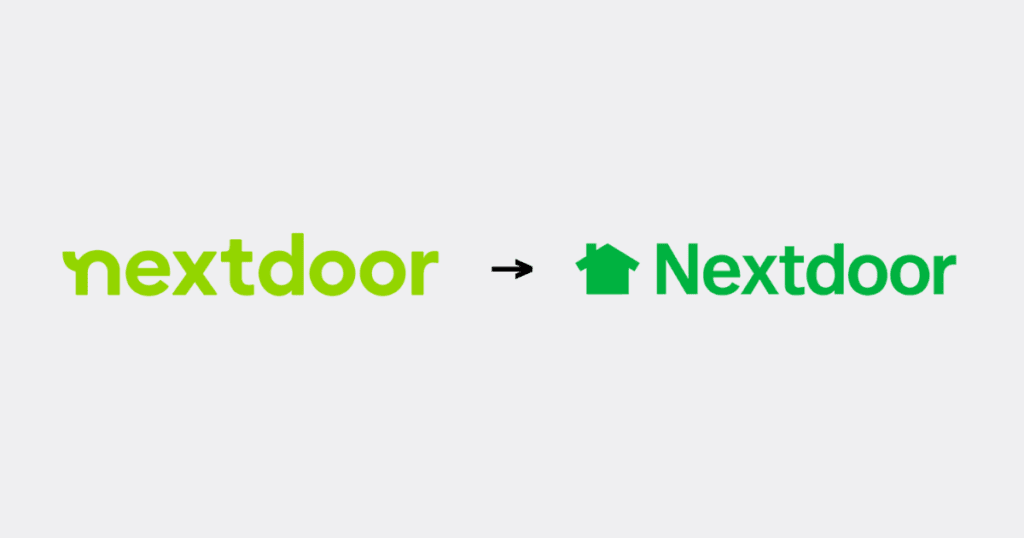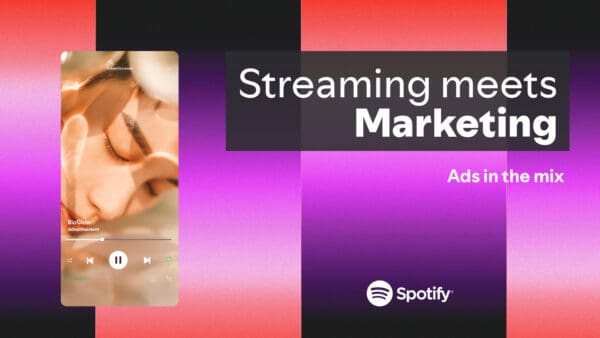Nextdoor Wants To Be Your Neighbor
Nextdoor, in a press release earlier this month announced what they are calling “the most consequential redesign of its core product to date”.
So what is a Nextdoor? For those unfamiliar with the app, Nextdoor is a neighborhood-focused social media platform that aims to connect people that are roughly in the same geographic area. Founded in 2011, distinguished itself back then and now by requiring that users verify their real mailing address to join each neighborhood network. This yielded small online spaces that ensure each user is interacting with people who are geographically close to them. Though growth has proven to be a challenge for the platform over the years, they do report about 100 million users across different countries. Though it has had some success in establishing itself as the “neighborhood bulletin board”, the platform has been trying to shed its reputation for neighborhood complaints, and move into a more utility-based role in its users’ lives.
With this most recent news release and rebrand, Nextdoor is making a major push toward real-life interactions and local relevance. For the 14 years since its original launch, they have been known as the app associated with neighborhood gossip, busybody neighbors, and people who spend a lot of time at home.
That said, they’re betting big on the fact that many more people will be staying home now that hybrid and remote work has become much more common among their target audience. The more people stay at or near home, the more people need information about what’s around them. Nextdoor is focusing on showcasing what’s near people’s houses – local connections, neighbors, nearby services, and businesses that want to reach them.
Nextdoor has long been a bit of a sleeping giant on the advertising front. With around 46.1 million average weekly users (defined as people who interact with their site, app, or emails in a 7-day period), they could truly become a major player for very localized, relevant, and trust-worthy marketing. Up to now, however, that has remained a promise and not a reality. It seems that they are aiming to change that going forward.
By their own admission, Nextdoor has recognized that, previously, the content has not been hyperlocal enough to drive engagement. In their most recent quarterly call, they also admitted that the nature of the content itself was not high-value enough to drive continued user engagement. Finally, they agreed that they were sending too many emails. Their recent rebrand comes with a refreshed look, but – importantly – substantive updates to their core offering. They hope that these improvements will address the above shortcomings and make Nextdoor part of users’ daily interactions with their local environments.
Technical Improvements
The technical side of the changes is simple, if thorough:
- They have improved local relevance with better machine learning and improved geospatial targeting. For users, this means that the information they see in their feed will be better partitioned and more locally relevant. For marketers, this means – hopefully – very good geofencing advertising options and more granular reporting.
- They have partitioned the UI to focus more on the utility the user is giving the app, which also makes for a cleaner look. For users, this will allow them to focus on what’s immediately pertinent to what they are looking for. For marketers, this may mean better segmentation for both targeting and reporting that can be split tested for performance and reaching folks on different surfaces across the platform with varying creative and copy.
- They are moving more towards a customized push notifications model, and away from so many emails. This is likely going to alleviate one of the most common complaints I have come across as a user of the platform: the barrage of notifications and emails from the app.
Becoming Users’ Hub for All Things Local
The main new and updated features that stand out from this version of Nextdoor is how they’ve found different ways to integrate and become people’s local hub. The company clearly is trying to deepen user engagement and frequency of usage. This will only come from making the app as relevant and convenient as possible to people’s daily local life.
Some ways they are attempting to do this are:
- Integrations with weather apps that will show you what the day will look like locally.
- New partnerships with local entities like fire departments and city governments to provide alerts for things like emergencies, weather events, and notifications from your friendly neighborhood firemen or other city institutions. Nextdoor could become the hub for finding out what your commute will look like or if the roadwork on Canal and Clairborne is still rerouting traffic.
- Map-based navigation for situations such as power outages and other locally-relevant alerts. Extremely helpful information for the work-from-home user who may be experiencing an internet outage and wants to know if this extends to their local coffee shop.
If well-deployed and well-received, this could make Nextdoor a great opportunity for advertisers who want to reach folks in crucial moments; when they are planning their day, reacting to outside factors, or finding out about their neighborhood.
News Integration for Local Impact
Continuing that theme, they’ve incorporated news from local news sources and publishers. To some extent, at a time when world news feels so overwhelming, I think this might be one of their better ideas – using local relevance so people can learn about news that will actually impact them directly.

These local news will be sourced from around 3,500 local publications that Nextdoor has already partnered with for content access and delivery. Though we don’t yet have much information on how they are curating and fact-checking these news sources, it likely will be refreshing
to get information on local events, festivals, family-friendly events, etc. This addition may be the main value propos
ition for a stay-at-home parent or someone who needs to know what to do near their house th
at isn’t a happy hour at a downtown bar anymore.
The news portion of this update will only be available in the US, the UK, and Canada for now, but I think this is actually a good update for them and something that’s going to increase their daily engagement. That’s one area where they’ve had some challenges before.
AI Implementation Using Years of Local Data
The final thing that seems like a big reveal is not that they are using AI in this new version (Who isn’t? Right?), but how they’re using AI. Nextdoor has around 14 years’ worth of data they can feed into AI; from local recommendations for a handyman, to what people think of the new bike lanes coming up near the park.
Nextdoor has said that about 30% of all neighbor posts are advice or offers of local services from people’s neighborhood. Now, this type of human, conversational posts is incredibly valuable material to leverage with AI; Nextdoor has a walled garden of very valid, trustworthy data that they can then use for reactive or proactive recommendations. A great use case would be recommendations for questions such as “What’s the best pizza in town or that delivers late at night” would be backed by years worth of dedicated neighbors’ input.
I think this is probably one of my favorite implementations of AI in recent times. If they do this correctly, it could bring a lot of validity to their service, to their content, and basically everybody’s recommendations from the last decade or so since Nextdoor launched.
They say this will be query-based but also bring you summaries for when you ask something like, “Where is there a good restaurant around me?” It’s going to take lots of content from several years’ worth of recommendations and bring you back a couple of options and quotes from posts that have been made.
Early feedback Nextdoor has shared shows users appreciate the “potential for quicker responses versus waiting for individual comments” and find AI recommendations generated within the Nextdoor community “more trustworthy” than generic review sites.
The Opportunity To Get Onboard Early
Overall, I think the concept of the new features is very aligned with what users seem to be wanting at this moment in the zeitgeist. All these new advances make Nextdoor an exciting platform for users who care about local relevance and real-life interactions. It also makes it an exciting platform for companies and brands who want to find the people in crucial micro-decision moments throughout their day. This would include restaurants and bars that have a weekly happy hour or a gym that recently opened; by definition, they’d have a captive local audience to speak to.
Nextdoor’s growth over the past years has been modest but steady at around 6% WAU growth YoY this past quarter. These changes could signal a prime opportunity to advertise on an up and coming platform in the early stages before higher competition and bids make adoption harder. In essence, everything should be a test, but it is more cost-effective to test before competitors have come onboard.
The changes themselves also address Nextdoor’s main competitive disadvantages:
- User Retention: Moving from email-dependent engagement to in-app utility
- Content Quality: Shifting from unpredictable neighbor posts to structured, valuable information
- Daily Relevance: Providing reasons to check the app beyond crisis moments
The Potential Flop Risks
- Content Moderation: The introduction of local news and AI recommendations introduce new content quality concerns about moderation and fact checking. Could the platform become a dead internet walled garden or a fake news echo chamber? Brands may be hesitant to be early adopters if these fears remain unaddressed.
- Technical Execution: Real-time alerts and AI responses require reliable infrastructure and the platform may suffer from success if the proper scalability safeties have not been implemented.
- User Adoption: Though I agree with the platform’s assumption on people’s preference for local, relevant, in-the-moment content, current user’s perception of value of these features will be the make or break for the next 12 months of Nextdoor’s growth and their ensuing success in the ecosystem.
The Bottom Line
Nextdoor’s transformation represents a big bet on becoming essential local infrastructure rather than optional social media. By combining real-time alerts, local journalism, and AI-powered recommendations, they’re creating multiple daily use cases that could finally unlock the platform’s advertising potential.
For marketers, this evolution offers new opportunities to reach highly engaged local audiences at crucial decision moments. However, success will depend on execution quality and whether Nextdoor can change user behavior patterns established over more than a decade.
The next couple of quarters will reveal whether this “refounding moment” transforms Nextdoor from a neighborhood gossip app into the local information hub they envision – and whether advertisers will follow neighbors to this new digital town square.
I personally would recommend testing out experimental budgets on the app to get some potentially low-cost traffic on a platform few others are using. There are many benefits of being an early adopter and fine-tuning the marketing strategy for the platform before competitors join.
If you are a company that wants to try the localized advertising Nextdoor is able to offer, contact us to discuss how we can create and manage a campaign for you that will find you customers IRL and impact your ROI.





